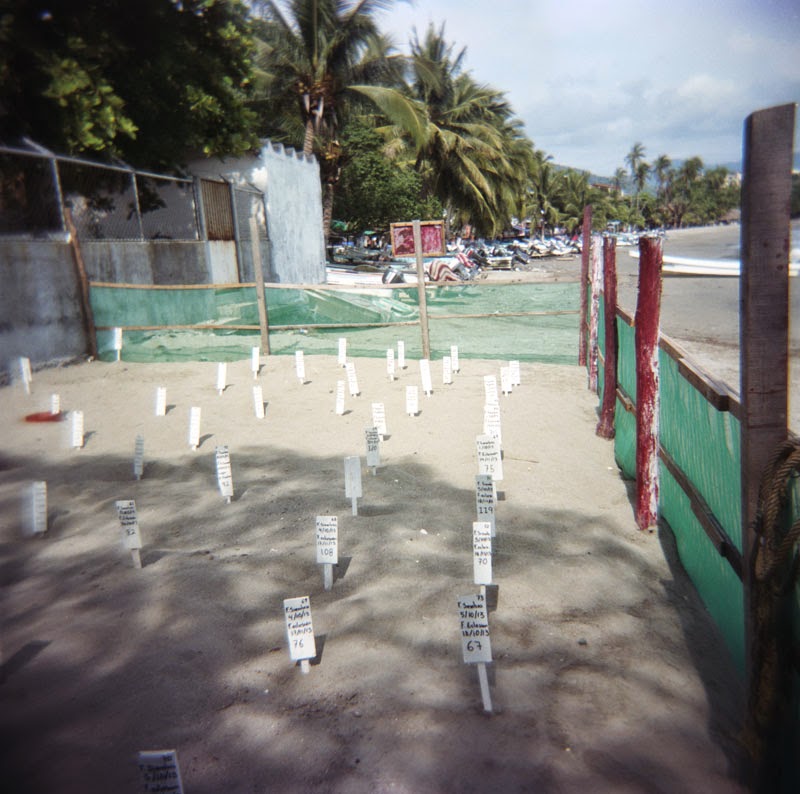Mexico's coastline is lucky enough to attract most of the world's turtle species to use its beaches as nesting sites.
Unfortunately habitat destruction, coastal development and hunting have meant that turtle numbers have declined significantly during the recent decades. Many beaches which are prime nesting sites are owned by resort hotels and turtle meat and eggs are considered a delicacy by local fishermen, neither of which augurs particularly well for the poor turtles.
Luckily, however, efforts are being made to give the turtles a helping hand.
In Ixtapan Zihuatenejo a number of hotels run turtle release schemes to protect the eggs laid by nesting turtles and to release the young into the sea.
When turtles nest on the beach, the eggs are removed and buried in an enclosed area of the beach where they are protected from human and animal predation.

The eggs are monitored and when the young turtles hatch, they are released on the beach to make their long, slow journey to adulthood.
Of those young that hatch, maybe one percent will survive to adulthood and having bred, the females will return to the same beach to nest and lay their eggs.
Many young are predated by seabirds during their first journey from beach to sea but luckily for the turtles hatched in these release schemes, the presence of volunteer workers and cooing guests frighten off any hungry gulls!
We were lucky enough to witness a batch of young Olive Ridley turtles being released on their long perilous journey during a stay in Ixtapan last year. It is incredible to think of the long journey these small, newly hatched animals will take and the multitude of perils they face on that journey.
The young turtles seem so feeble and disorientated and yet those that survive will cling to life with a strength far greater than their diminutive size would give them credit for.
It would be nice to think that a least one of the tiny creatures in these photographs will make it back.
Sunday, 22 June 2014
First Steps
Subscribe to:
Post Comments (Atom)










No comments:
Post a Comment